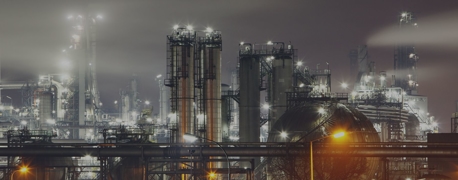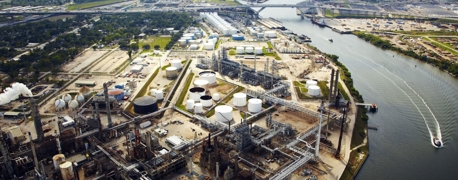11 Organizations That Affect the Lives of Chemical Workers

The U.S. chemical industry manufactures more than 70,000 products used in everything from baby powder to military vehicles. It’s a massive industry worth over half a trillion dollars—greater than the total GDP of most countries. As you can imagine, regulating, managing, or attempting to document such an industry presents enormous challenges.
In today’s article, we focused on providing some context and general history on the biggest players in the chemical manufacturing industry that aren’t chemical companies.
#1: American Chemical Council
The American Chemical Council (ACC) was founded in 1872 as a trade association for American chemical manufacturers. Today, the group lobbies on behalf of chemical companies as well as the plastics and chlorine industries at large.
In December 1984, a chemical disaster in Bhopal, India exposed half a million people to toxic gas. Thousands died within weeks, and thousands more perished from diseases associated with exposure. It’s ranked among the worst industrial disasters in human history. The plant owner was the U.S.-based Union Carbide Corporation (UCC), owned by Dow Chemical at the time. In response, the ACC implemented the Responsible Care program in 1988, which commits the chemical industry to self-regulation to improve occupational safety and environmental health.
Today, the ACC is mainly a lobby organization, shaping policy to oppose environmental regulations where U.S. chemical companies operate.
#2: United States Chemical Safety & Hazard Investigation Board
Known more commonly as the Chemical Safety Board (CSB), the United States Chemical Safety & Hazard Investigation Board is a federal agency committed to investigating industrial disasters and accidents involving chemical manufacturing or chemical causes. The agency has no enforcement arm; instead, the CSB uncovers the root procedural causes of chemical accidents at “fixed industrial facilities” (i.e. plants) and issues recommendations to prevent further harm.
While the CSB often investigates facilities alongside OSHA and the EPA, the CSB’s investigations are explicitly independent of any enforcement agencies. The CSB has investigated some of the country’s worst chemical plant accidents and industrial incidents, including the Deepwater Horizon explosion, the Texas City refinery explosion, and the West, TX fertilizer explosion.
The CSB is known for:
- Public release of all investigation results
- Highly technical and thorough investigations
- High-quality animations and video reports
The Clean Air Act Amendments in 1990 authorized the formation of the CSB, but the board wasn’t formed until its members were appointed by the President and confirmed by the Senate in 1998. Under the law, no agency or official can direct the CSB to investigate specific events; like the NTSB and the DOT, what accidents they investigate are entirely self-directed.
#3: Chemical Facility Security & Safety Working Group
The Chemical Facility Security and Safety Working Group (CWG) is a joint oversight group made up of officials from the Labor Department, Homeland Security, Justice Department, Transportation Department, Agriculture Department, and the Environmental Protection Agency. Together, the CWG addresses security and safety at chemical facilities that manufacture key products for national health, security, and commerce.
The CWG was founded in 2013 during the Obama administration in response to catastrophic chemical plant accidents. Upon its founding, the working group created a Federal Action Plan that focused on five priorities.
The Federal Action Plan’s five priorities include:
- Planning and preparedness for communities around chemical plants
- Improving coordination between federal agencies
- Managing data on chemical plants more effectively
- Updating policies and regulations re: chemical plants
- Incorporating “stakeholder feedback,” i.e. plant manager feedback
#4: Process Safety Management
While not an organization, Process Safety Management is a major factor in the American chemical industry. PSM is a regulation set by OSHA based on definitions shared by OSHA and the EPA to govern the use, storage, creation, handling, or movement of “highly hazardous chemicals” or HHCs. PSM is designed as a method of analysis for preventing chemical releases.
The point of PSM is to reduce the number and severity of chemical exposure accidents in the U.S. There are 14 components to PSM that include operational procedures, design guidance, audit programs, and other tools.
A full PSM plan includes:
- Process Safety Information
- Process Hazard Analysis
- Operating Procedures
- Training
- Contractors
- Mechanical Integrity
- Hot Work
- Management of Change
- Incident Investigation
- Compliance Audits
- Pre-Startup Safety Review
- Emergency Planning and Response
- Trade Secrets
- Employee Participation
#4: EPA
The Environmental Protection Agency (EPA) has appeared multiple times on this list already in other capacities, so you know that it had to be included on the official list. The EPA was formed in 1970 under the Nixon administration after over a decade of pressure and anxiety about how industrial production was harming the environment. In response to the burning of the Cuyahoga River in Ohio, Nixon passed the National Environmental Policy Act of 1969 to require federal agencies to draft environmental impact statements (EIS) for major actions that would affect the climate.
A year later, all the environmental responsibilities shared by multiple agencies and federal organizations were consolidated under one authority: the EPA. Everything from pollution control to the regulation of pesticide use was brought over from the Departments of Agriculture, the Interior, and others.
While the EPA started as an agency that set goals and standards for environmental protection, over time Congress approved expansions to its authority and duties. While the EPA governs emissions and environmental impact, many of its recommendations and policies overlap with policies that provide chemical plant workers with safer workplaces and lower risk of toxic exposure.
#6: United Steelworkers
Founded in 1942, the United Steel, Paper and Forestry, Rubber, Manufacturing, Energy, Allied Industrial and Service Workers International Union (abbreviated to United Steelworkers or USW) is a general trade union affiliated with the AFL-CIO. USW is most well-known for actions like the 1952 steel strike, the 1959 steel strike, the 1974 Elliot Lake miners strike, and the steel strike of 1986.
The formation of USW was the result of six years of discussion and struggle to form a general union among all the different unions representing steel workers. USW has grown chiefly through merging with unions in various trades, including forestry, plastics, glass production, and more. Their ranks include chemical plant workers.
Studies have linked union membership to higher wages, more favorable hours, better benefits, and greater involvement in how the workplace is managed. These factors—particularly benefits like rest time or favorable hours—are linked to workplace safety, particularly because they prevent fatigue, which is a leading cause of accidents.
#7: OSHA
The Occupational Safety and Health Administration (OSHA) is an agency under the Labor Department charged with making workplaces safe through inspections, regulatory standards, whistleblower laws, and enforcement.
OSHA was formed in the wake of the post-World War II economic boom, which led to mass industrialization and employment across the United States. This increasing expansion lasted for nearly 30 years. High turnover and expansion led to higher injury rates, which prompted pressure from unions to establish safety standards. Congress complied in 1971 with the formation of OSHA, which covers the vast majority of private businesses.
Studies show that OSHA inspections are effective at reducing injury rates and associated costs without harming employment, credit ratings, or the survival of the business.
#8: National Institute for Occupational Safety & Health (NIOSH)
As a part of the Centers for Disease Control and Prevention (CDC), NIOSH is the federal research arm for worker health. Unlike OSHA’s enforcement mandate, NIOSH focuses on science: epidemiologic studies, lab toxicology, and field investigations that identify emerging hazards—from isocyanate asthma among polyurethane workers to chronic beryllium disease in aerospace machining.
The agency issues Recommended Exposure Limits (RELs), publishes NIOSH Pocket Guides on hundreds of chemicals, and maintains the Fatality Assessment & Control Evaluation (FACE) program—case studies that show how a single process lapse can kill. Chemical plants that follow NIOSH guidance (instead of merely OSHA’s minimum Permissible Exposure Limits) dramatically cut long-term illness claims and improve employee retention.
#9: NFPA & CCPS Rulebooks for Fire, Explosion & Process Safety
Two privately developed standards guide nearly every refinery and chemical unit in the country:
- NFPA (National Fire Protection Association) Codes:
NFPA 30 governs flammable-liquid storage tanks, bonding, grounding, and spacing; NFPA 484 addresses combustible metals; NFPA 654 tackles dust explosions. These codes are written for fire marshals but have been adopted by many states (including Texas) into building and fire law. When a plant ignores them, juries may find negligence per se—the company broke a safety rule that already has the force of law. - CCPS (Center for Chemical Process Safety) Guidelines:
A not-for-profit organization within the American Institute of Chemical Engineers (AIChE), CCPS publishes the gold-standard handbooks for Process Hazard Analyses, Layers of Protection Analysis, Safety Integrity Levels, and Risk-Based Process Safety. While not codified, CCPS guidelines may establish reasonable care standards for designing reactors, relief systems, flare networks, and more. Investigators from the U.S. Chemical Safety Board cite CCPS guidance in almost every catastrophic incident report.
#10: Pipeline & Hazardous Materials Safety Administration (PHMSA)
Part of the U.S. Department of Transportation, PHMSA regulates the off-site life of chemicals: railcars of vinyl chloride, truckloads of anhydrous ammonia, and cross-country NGL pipelines feeding Gulf Coast petrochemical facilities. When a railcar derailment or pipeline rupture injures workers, PHMSA’s 49 CFR Parts 100-199 set the baseline for what should have been in place: integrity management plans, “One Call” dig protocols, valve spacing, and tank car design.
Chemical plants that receive or ship HazMat via DOT-regulated pipelines or rolling stock must ensure compliance with PHMSA rules and OSHA Process Safety Management. Failure to do so has figured prominently in CSB reports on incidents such as vapor cloud explosions and chemical plant fires.
#11: Texas Commission on Environmental Quality (TCEQ)
Houston and the Gulf Coast host the largest concentration of U.S. petrochemical assets, and TCEQ wields influence over plant permits, flaring variances, and “upset” emissions. After the 2019 Deer Park ITC fire, Harris County sued the operator for unauthorized VOC releases, but TCEQ’s prior compliance history—and critics say, lenient fines—were also scrutinized.
For chemical workers, TCEQ’s air monitoring and Title V permitting directly affect allowable benzene or butadiene levels inside unit battery limits. TCEQ compliance files (available through the agency’s Central Registry and public records) may show a pattern of safety shortcuts that foreshadow catastrophic explosions.
Knowing the Players Matters
Chemical manufacturing is vital to everything from life-saving drugs to everyday plastics—and its sheer scale has resulted in an entire system of organizations that regulate operators, set and enforce standards, research incidents, and recommend improvements. The EPA, OSHA, TCEQ, NFPA, CCPS, PHMSA, NIOSH, the CSB, the United Steelworkers, and even the industry-backed ACC all occupy distinct lanes, but together they form a safety net meant to keep plants running and people alive. When each organization does its job—researching hazards, writing codes, enforcing permits, or giving workers a collective voice—catastrophic explosions and toxic releases can be prevented.
At Arnold & Itkin, we track this web of agencies and standards because it tells the story of why a disaster happened and who could have stopped it. That knowledge helps us hold companies accountable, push for tougher safeguards, and secure the compensation workers need to rebuild their lives. Chemical workers are the backbone of America’s economy; they deserve an industry—and an oversight system—that puts their safety first. Understanding the roles of these organizations is a key step toward making that a reality.
- Categories


